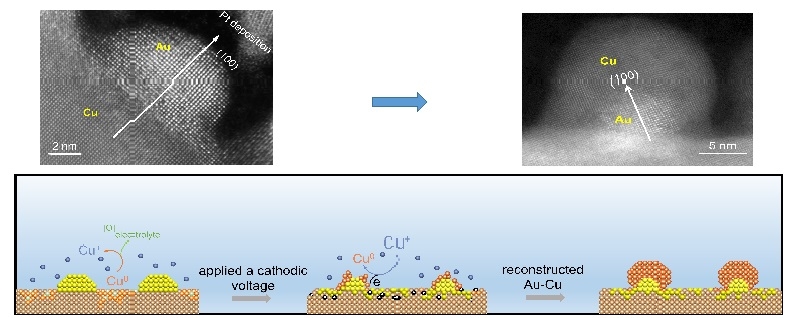Interfacing Cu with a secondary metal is an effective strategy to enhance the production of value-added C2+ fuels in CO2 electroreduction. However, such a biphasic interface generally suffers unclear dynamic reconstruction/phase transformation, rendering the structure-function correlation elusive. Here, we studied a model system of epitaxial Au–Cu heterostructure, which exhibits a ∼150 mV more positive onset potential for C2+ alcohols and a 400-fold improved alcohols production over hydrocarbons, relative to primitive Cu. We unambiguously revealed a dynamic restructuring of such heterostructure, from phase-separated bimetals to alloy-supported core-shell nanoclusters, driven by the oxidation/reduction of Cu(0) at the interface. A distinct tandem mechanism was proposed, and the buildup of ∗CO was identified as crucial to keeping the production durability of C2+ alcohols. This work fills in the voids of direct observation on the dynamic restructuring of the bimetallic interface and establishes a paradigm to understand the tandem CO2-to-C2+ alcohols conversion from an atomic view.
https://www.sciencedirect.com/science/article/abs/pii/S2451929422004296?via%3Dihub

